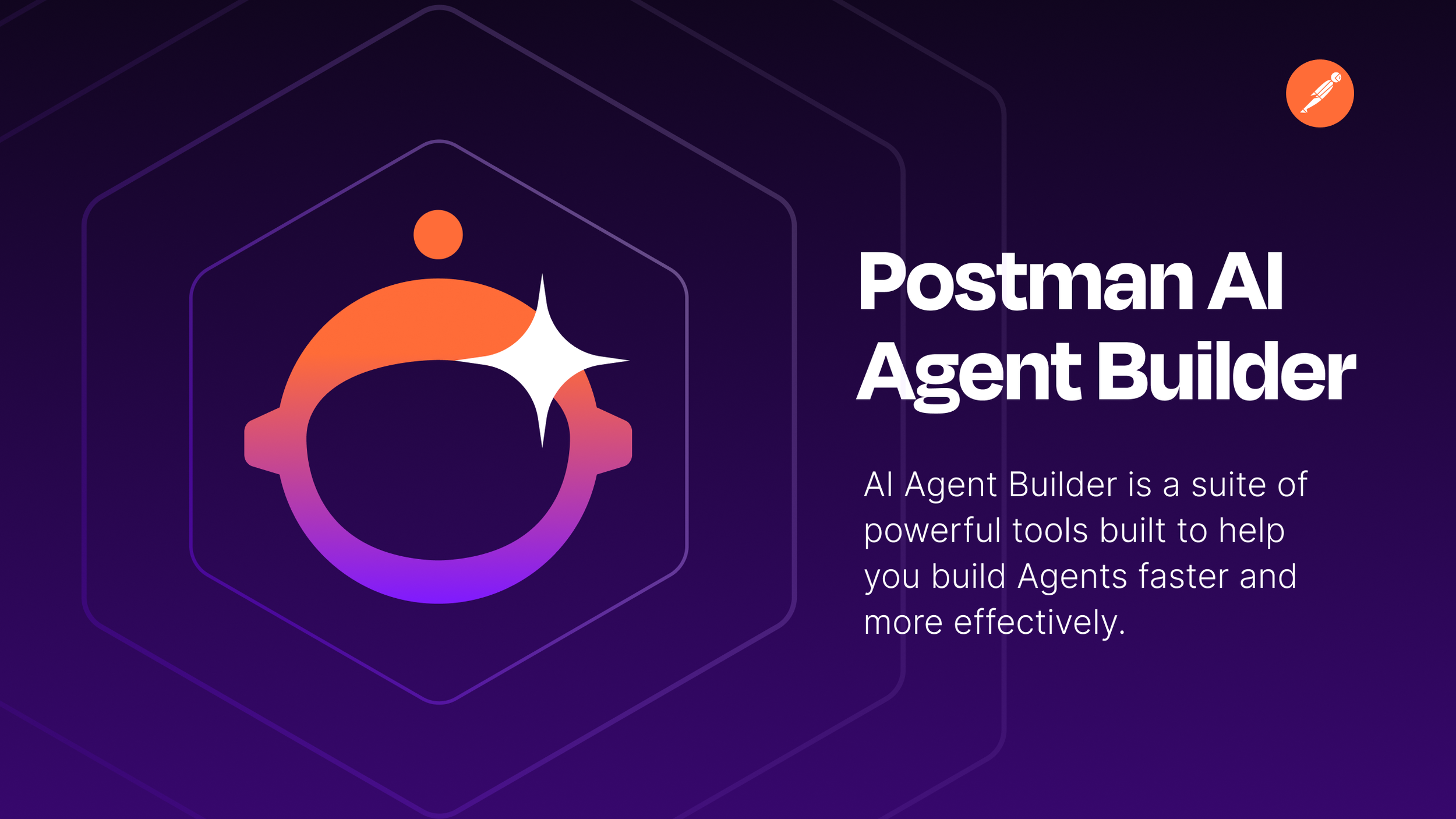AI Agent Builder
Postman’s AI Agent Builder accelerates the discovery, development, and deployment of AI agents by integrating LLMs, APIs, and workflows into a unified platform. For those using their own tools, Postman’s API-first solutions provide seamless access to discovery and API-to-code capabilities.
To launch AI Agent Builder, we applied a product-led growth strategy, leveraging SEO, social media, targeted ads, and guided demos to attract users. I led UX for the landing page and interlinking experiences.
Problem
Launch a high-impact, high-priority launch campaign in just six weeks over the holidays, navigating a shifting product roadmap while crafting an experience that resonates with both developers and CIOs/CTOs.
Goal
Build a high-impact AI Agent Builder landing page that clearly communicates the new feature’s value, drives engagement, and guides conversion, serving as the primary entry point and optimizing for search through strategic interlinking.
Results
Sustained Engagement. The landing page maintained consistent traction post-launch, avoiding the typical steep decline, likely due to coordinated influencer and PR campaigns.
2.6% conversion rate on landing page. The landing page drove targeted traffic directly into the product, resulting in significant engagement with in-product experiences.
2x Waitlist Signups. Waitlist sign-ups doubled expectations compared to similar past campaigns.
Media Impact
This project garnered extensive media attention from high-profile publications, underscoring its industry impact and innovation:
Process and Approach
Leveraged pre-existing research and component structures: Due to the tight timeline, I utilized pre-conducted user research and established component structures from previous projects to ensure we could quickly iterate and deliver a high-quality product. This decision allowed the team to expedite the creation process without sacrificing usability.
Conducted a heuristic evaluation: I led the heuristic evaluation of the page to ensure optimal usability and compliance with best practices. By identifying potential issues early, I was able to guide the team in addressing them before development, minimizing rework and enhancing the user experience.
Optimized CTA placement and user flow: I focused on strategically placing primary and secondary CTAs throughout the page to guide users effectively. The primary CTA was centered around encouraging users to begin building with the product, while secondary CTAs directed users to sign up for notifications on new features and access a curated playlist of instructional videos. This approach aimed to drive product adoption and provide ongoing value to users.
Targeted user personas (developers and CIO/CTO): Understanding the unique needs of both developers and CIO/CTOs, I tailored the content flow to resonate with each persona. I collaborated with cross-functional teams, including product managers and content strategists, to ensure messaging and formatting effectively spoke to both groups.
Wireframed and iterated with informal testing: I created wireframes for the landing page and conducted informal content and usability testing within the team to gather initial feedback. I facilitated collaboration across teams by incorporating insights and revising the wireframes accordingly, allowing for continuous improvement.
Strategic interlinking across pages: In collaboration with the content and SEO teams, I developed a strategy for strategic interlinking not just within the landing page, but across the broader site. This drove targeted traffic to the landing page and helped users navigate through complementary content, enhancing overall user engagement and retention.
Collaborative work with engineering: I worked closely with the engineering team on the beta version of the page to test, optimize, and revise the interaction design. By fostering clear communication and continuous feedback loops with engineers, I ensured smooth page development and aligned with our vision for user experience.
Challenges
Optimizing Content Flow & Reducing Exit Points
Challenge: The initial page design presented multiple calls to action (CTAs) and exit points, resulting in a scattered user journey. Users were presented with several choices, leading to decision fatigue and leaving some users unsure of where to focus next.
Solution: Collaborating with the Product Marketing Manager (PMM), we refined the content flow to create a more cohesive journey, prioritizing a single, clear primary CTA. This allowed users to focus on one main action and reduced cognitive overload. We eliminated excess exit points and used clear, contextual CTAs that guided users smoothly toward the desired outcomes.
Iteration of Interlinking Strategies & Homepage Placement
Challenge: Initially, the AI Agent Builder page was siloed from other key areas of the site. There was an opportunity to integrate the product more deeply into the overall user experience.
Solution: We identified opportunities to deepen strategic interlinking across the site, such as surfacing the AI Agent Builder more prominently on the homepage and strengthening its connection to related product pages. This included aligning messaging with complementary offerings like the Flows product, reinforcing their relationship while maintaining clear, distinct value propositions.
Conclusion
This case study demonstrates how a collaborative, data-driven approach–leveraging pre-existing research, heuristic evaluations, and strategic interlinking–transformed a tight timeline into measurable success. By aligning messaging with distinct user personas and optimizing the landing page, we doubled waitlist sign-ups and sustained engagement, further validated by high-profile PR coverage including Forbes and TechCrunch. This project underscores the power of cross-functional collaboration in driving innovation and growth, positioning the AI Agent Builder as a pivotal tool in our product ecosystem.

